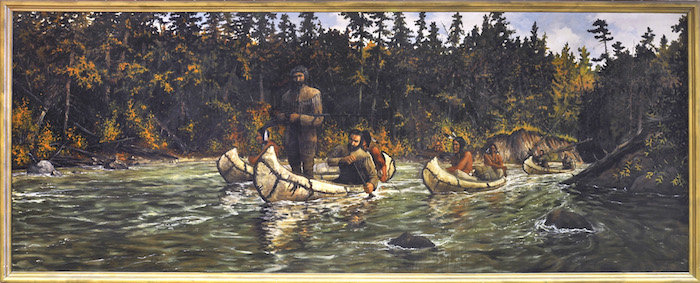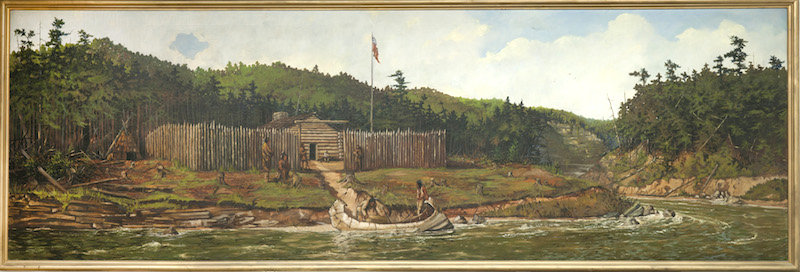Since 1936, two large murals by Cal Peters portraying early Wisconsin history have dominated the common area of Harvey Hall at the University of Wisconsin-Stout (UW-Stout). One mural shows French fur traders and American Indians traveling down the Red Cedar River by canoe, while another portrays a wooden fort constructed by the French. Neither painting shows any violence at all.
But now, after 80 years, the murals are abruptly being given the heave-ho after concerns were raised that the paintings are offensive. School chancellor Bob Meyer says some American Indian students have objected to what the paintings show.
Comment: Commissioned by the Works Progress Administration in 1936, the paintings -- made by Wisconsin-born artist Cal Peters -- depict a French fort and fur traders with Native Americans canoeing the Red Cedar River. At 6 feet tall and up to 18 feet wide, the murals command attention in the corridors of Harvey Hall.
"When they look at the art, to them it symbolizes an era of their history where land and possessions were taken away from them, and they feel bad when they look at them," Meyer told Wisconsin Public Radio. In addition, UW-Stout's Diversity Leadership Team complained about the murals to Meyer, arguing their presence helped to perpetuate racial stereotypes.
The diversity team's arguments carried the day, and Meyer released a statement saying they were being taken down. Because of the risk the paintings could have a "harmful effect" on viewers, Meyer said they were only suitable for a "controlled gallery space" that could provide appropriate "context" for the viewer. But UW-Stout contains no such controlled galleries, so instead the paintings are being placed outside the public eye. One will go into a dean's conference room, while another will be placed in Harvey Hall's library.
Meyer claims his decision is strictly business and isn't about trying to be politically correct. "We want to make sure that, really, what we decorate our hallways with and what we put in our hallways is consistent with our values to try to attract more Native Americans to the university," Meyer said.





yeah it is MUCH better to marginalize, whitewash, and ultimately deny the country's history of killing, thievery, and oppression.
That will make us all feel better.
Way to go Native Americans, way to go.